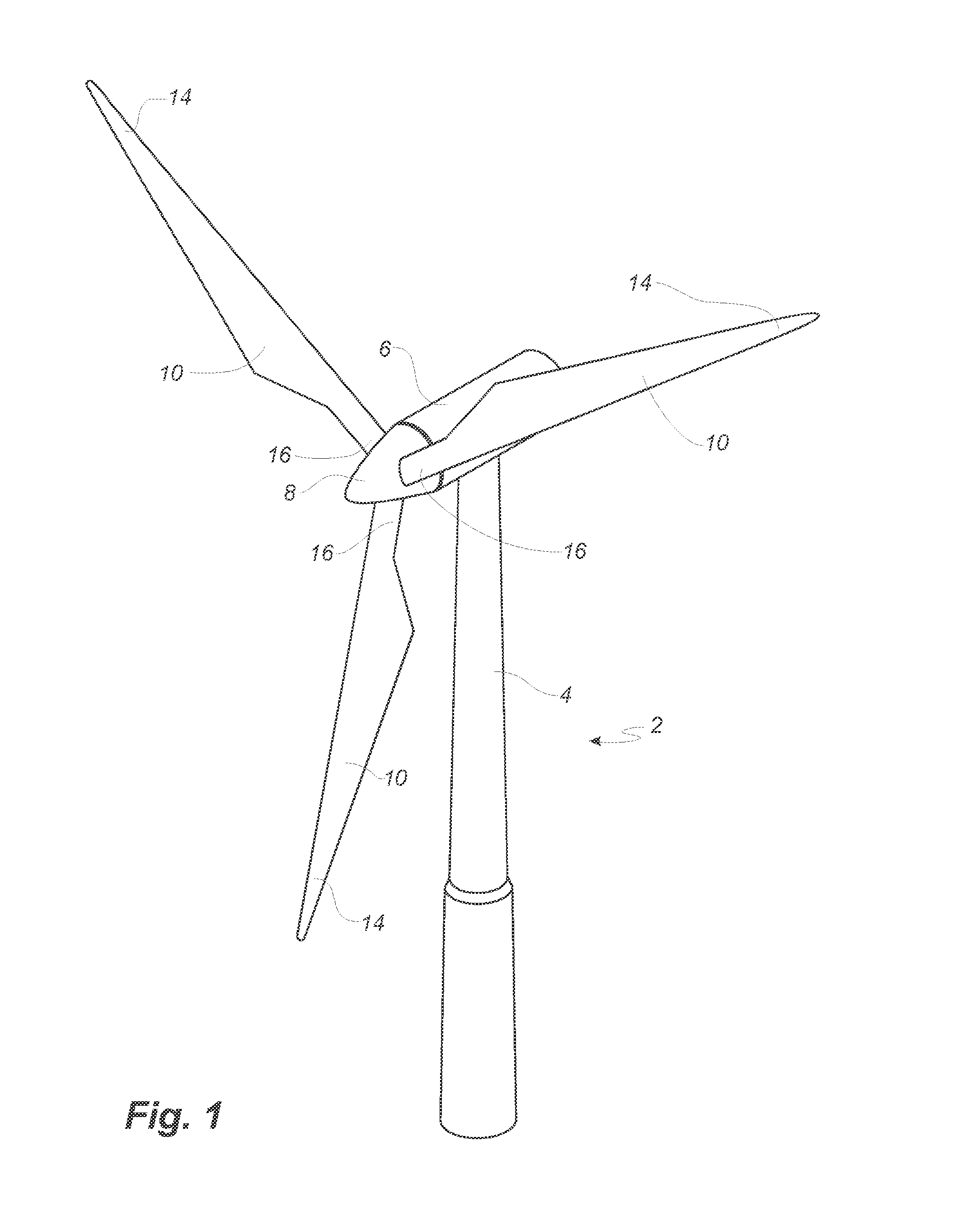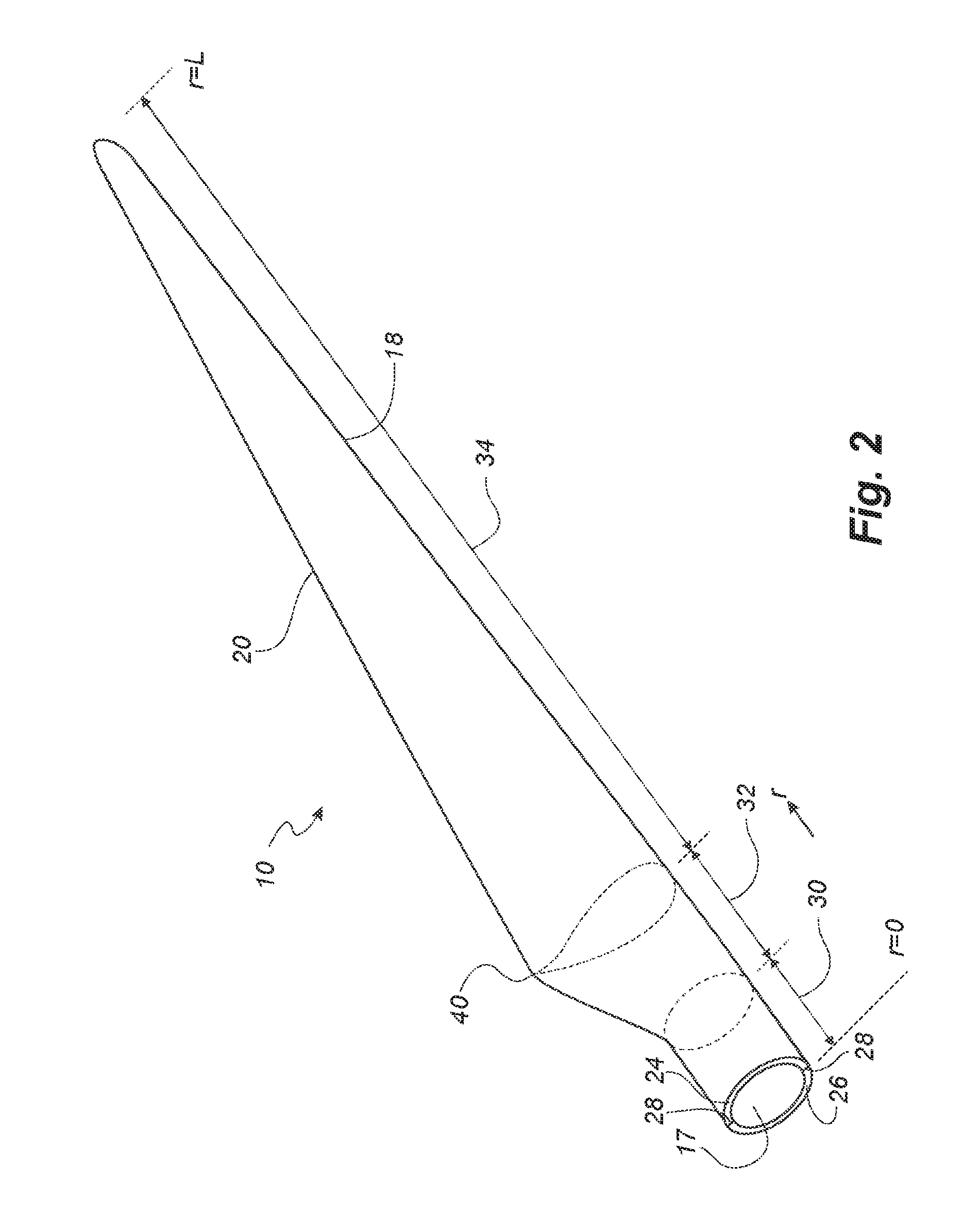A joining method for wind turbine blade shells
- Summary
- Abstract
- Description
- Claims
- Application Information
AI Technical Summary
Benefits of technology
Problems solved by technology
Method used
Image
Examples
Embodiment Construction
[0066]An embodiment of the invention will now be described, by way of example only, with reference to the accompanying drawings, in which:
[0067]FIG. 1 shows a wind turbine;
[0068]FIG. 2 shows a schematic view of a wind turbine blade according to the invention;
[0069]FIG. 3 shows a schematic view of an airfoil profile of the blade of FIG. 2;
[0070]FIG. 4 shows a schematic view of the wind turbine blade of FIG. 2, seen from above and from the side;
[0071]FIG. 5 illustrates an enlarged cross-sectional view of a leading edge adhesive bond for a prior art wind turbine blade; and
[0072]FIG. 6 illustrates an enlarged cross-sectional view of a bond for a wind turbine blade according to the invention, along a wind turbine blade leading edge.
[0073]It will be understood that elements common to the different embodiments of the invention have been provided with the same reference numerals in the drawings.
[0074]FIG. 1 illustrates a conventional modern upwind wind turbine 2 according to the so-called “...
PUM
| Property | Measurement | Unit |
|---|---|---|
| Area | aaaaa | aaaaa |
| Stiffness | aaaaa | aaaaa |
Abstract
Description
Claims
Application Information
 Login to View More
Login to View More - R&D
- Intellectual Property
- Life Sciences
- Materials
- Tech Scout
- Unparalleled Data Quality
- Higher Quality Content
- 60% Fewer Hallucinations
Browse by: Latest US Patents, China's latest patents, Technical Efficacy Thesaurus, Application Domain, Technology Topic, Popular Technical Reports.
© 2025 PatSnap. All rights reserved.Legal|Privacy policy|Modern Slavery Act Transparency Statement|Sitemap|About US| Contact US: help@patsnap.com



